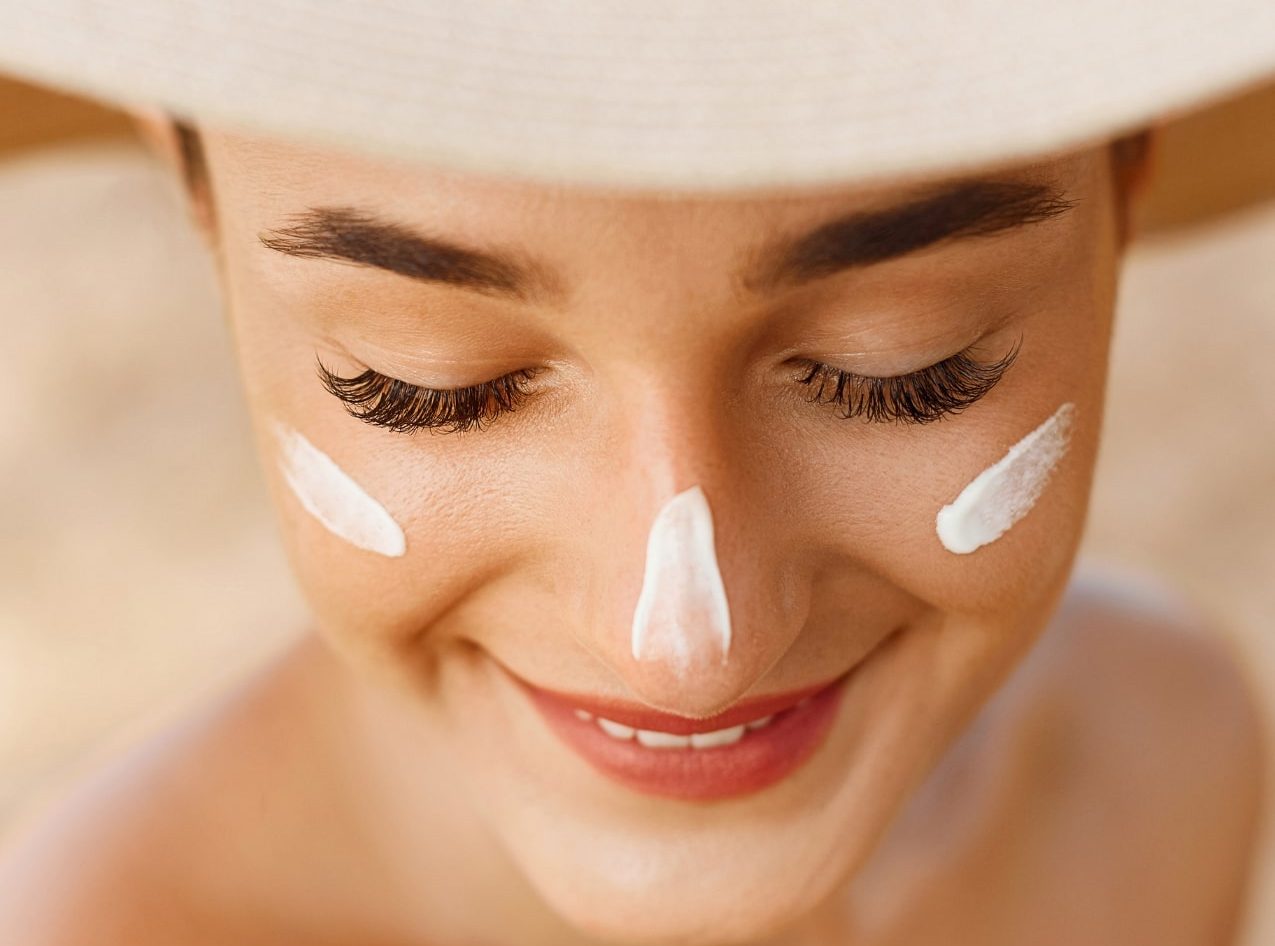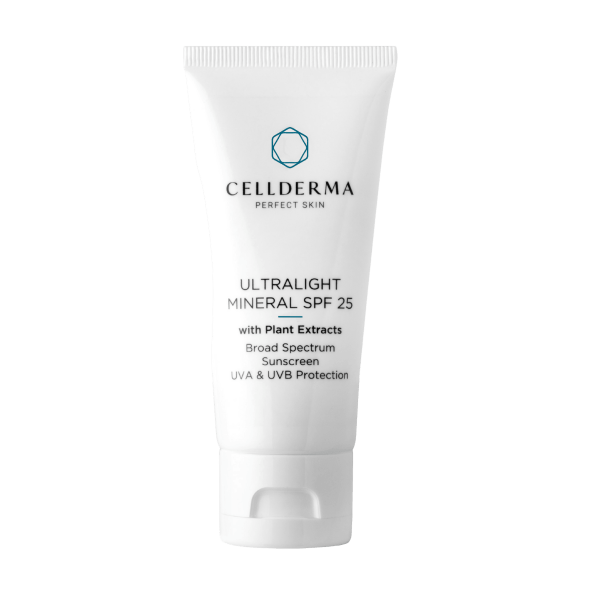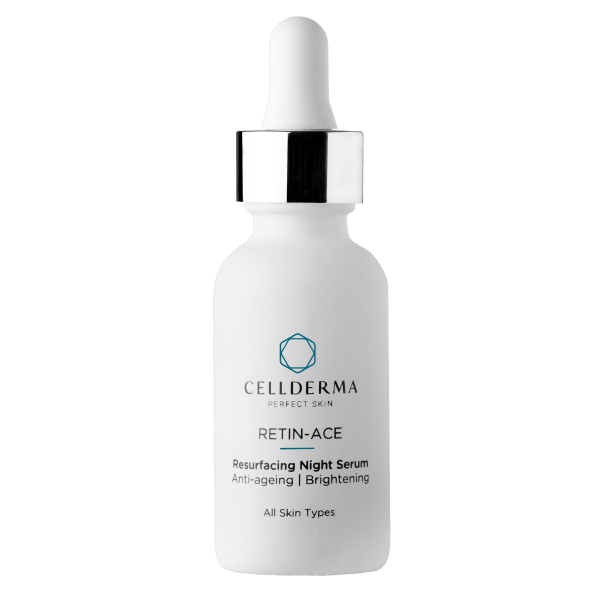-
 Free Delivery on Orders Over £100
Free Delivery on Orders Over £100
-
 Free Gift on First Order - £50 Min Spend
Free Gift on First Order - £50 Min Spend
-
 Dermatologist Tested
Dermatologist Tested
SOS: Save Our Skin – Rosacea Relief
Topic: Save Our Skin
Tags: redness rosacea rosacea prone skin rosacea relief skin concerns skin health
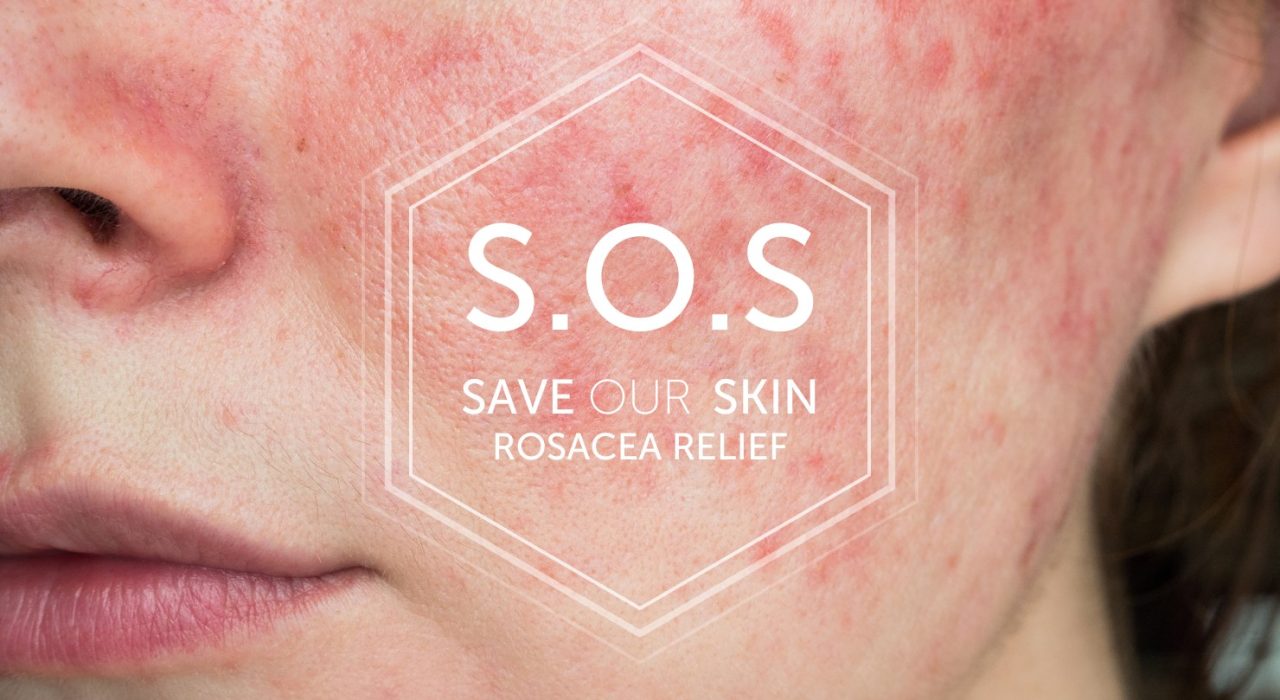
If your skin seems to have a mind of its own, flaring up at sunshine, spicy food, or a hot shower, you might be dealing with rosacea. In this blog, as part of our SOS: Save Our Skin series, we’re diving into a guide to rosacea relief – what it is, what causes it, how to soothe it.
What is rosacea?
Rosacea is a long-term inflammatory skin condition affecting around one in 20 people in the UK. There’s no “cure” as such, but it’s a condition that can be managed.
The exact cause remains unclear, but several theories exist. One involves the Demodex mite. Yes, everyone hates the idea of skin mites, but they live harmlessly on many people’s skin. In an article by the National Rosacea Society, the link was made only because mites were found in higher numbers in those with rosacea in a study by funded by the NRS. Another theory suggests an association with Helicobacter pylori, a bacteria long-known for its connection to stomach ulcers. Some believe this may also be linked to rosacea.
Other hypotheses include the idea that patients with rosacea have a decreased “sensitivity threshold,” meaning minimal triggering can induce redness and other symptoms. There may also be abnormal immune reactions in the skin that cause inflammation, alongside dysregulated communication between the nerves and blood vessels in the skin.
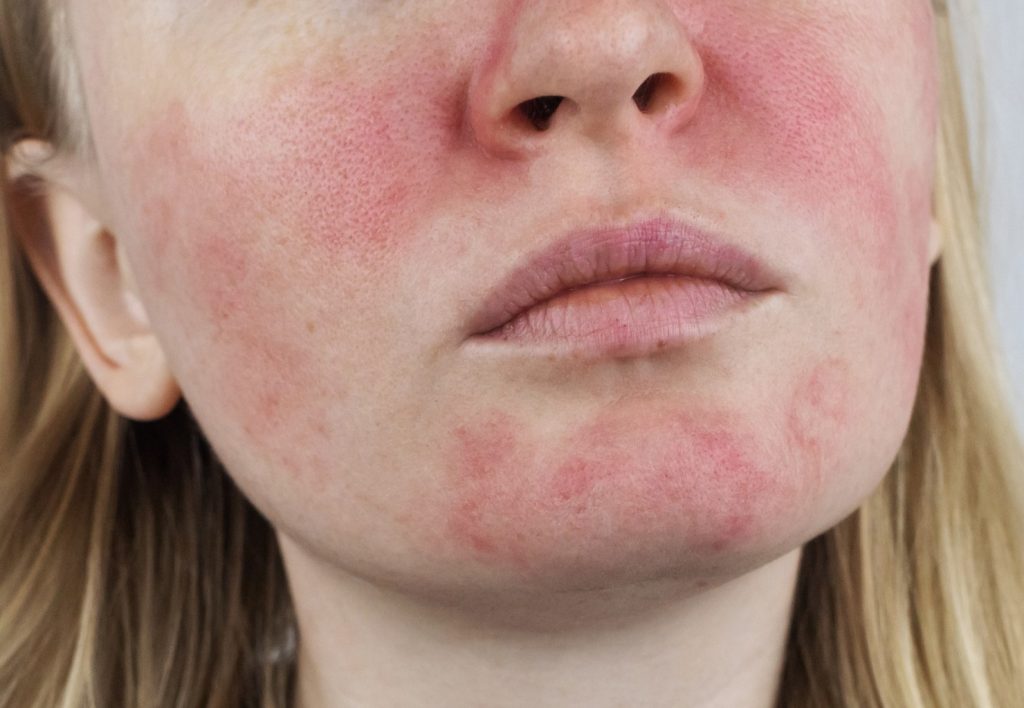
What does rosacea look like – are the symptoms obvious?
Rosacea is typically characterised by facial flushing, telangiectasia (fine visible capillaries), and papules (acne-like spots). The area’s most commonly affected are the nose, forehead, cheeks, and chin. In many cases, individuals may also experience sore, red or dry eyes, and in some cases, a progressive thickening of the skin on the nose.
A key feature is persistent redness – flushing that typically lasts longer than 10 minutes. Less visible symptoms include skin irritation, a burning or tingling sensation, dryness, tearing, and hypersensitivity.
How do you know it’s rosacea?
How do you know your skin flushing is not a result of something else like menopause or the effects alcohol? While the symptoms can seem similar, rosacea flushing generally lasts longer and often comes with other telltale signs. Understanding your skin’s behaviour and looking closely at your lifestyle can help pinpoint the difference and discover effective solutions or treatment.
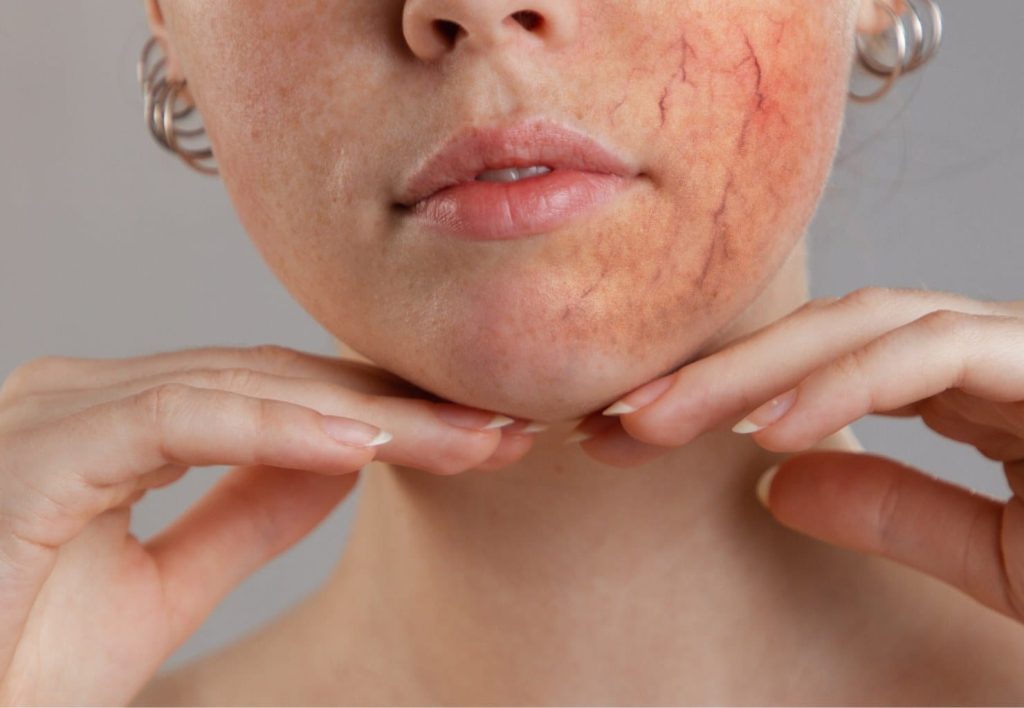
What are the triggers?
Triggers vary from person to person, but commonly include weather elements such as wind or sun, hot baths or showers, stress, extreme temperatures, exercise, and certain skincare products – particularly chemical-based sunscreens. Frequently, people mistake rosacea for acne, but those are often too harsh and end up inflaming the skin even more.
Who is most at risk of developing rosacea?
Age, ethnicity and gender all play a role, as does genetics. It most commonly affects women aged 30 to 50, though men and young people can also be affected. No one is immune. Fair skin types, particularly those with the classic ‘Irish’ pale complexion, are more at risk. Close-up, telangiectasia (fine capillaries) and papules (acne-like spots) are often visible.
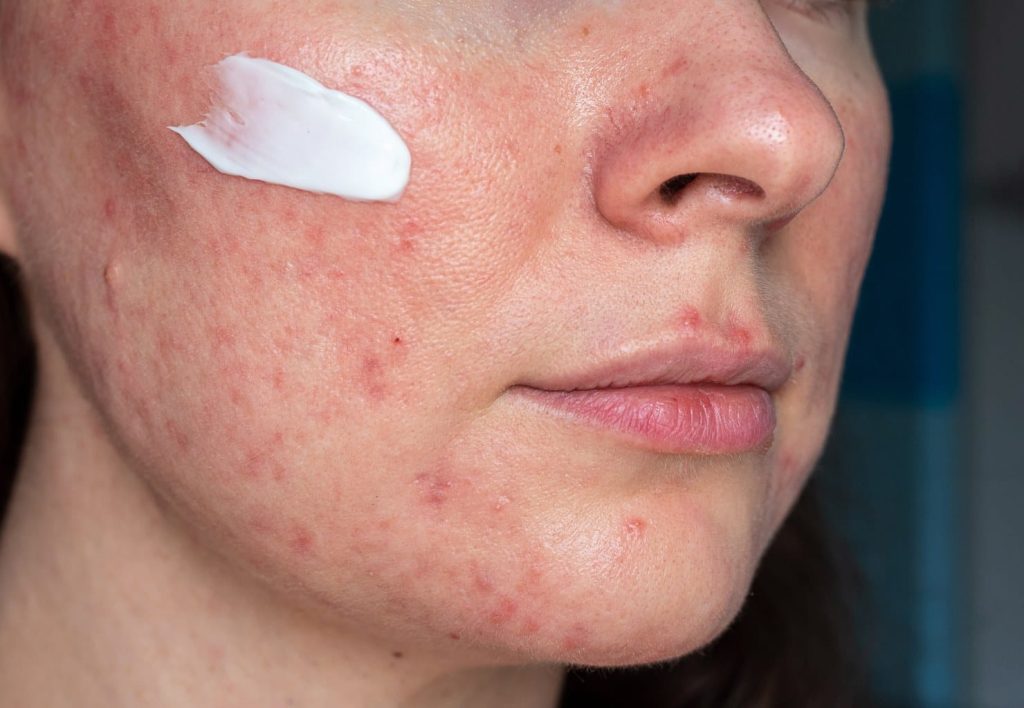
How is rosacea treated?
One of the most important things for managing rosacea are using a zinc oxide-based sunscreen every day, such as Ultralight Mineral SPF. For anyone with rosacea, daily sun protection is essential. UV exposure is one of the most common rosacea triggers, and even short bursts of sun can lead to flare-ups, increased redness, and skin sensitivity. That’s where zinc oxide steps in as a hero ingredient.
Zinc oxide is a mineral-based (physical) sunscreen filter that sits on top of the skin and reflects UV rays, rather than absorbing them like many chemical sunscreens. This can be gentler for skin with a compromised barrier (like rosacea-prone skin) because it doesn’t rely on chemical filters that absorb into the skin to neutralise UV. This makes it much gentler for reactive, rosacea-prone skin. It’s also naturally anti-inflammatory, helping to calm irritation rather than cause it.
So, using a zinc oxide-based SPF daily, come rain or shine, is one of the simplest, most effective steps you can take to prevent flare-ups and protect your skin’s barrier.
Dr Patel, founder of CellDerma, has seen the biggest impact on his rosacea patients with CellDerma’s Retin-ACE® serum. Retin-ACE® contains a vitamin A derivative that promotes skin renewal and supports cell turnover for long-term relief from redness and sensitivity. It also helps to reduce clogged and open pores. Retin-ACE® provides essential retinoid and antioxidant action without irritation. It also delivers anti-inflammatory and hydrating benefits that are ideal for skin inflammation & redness.
Conclusion
Dr Patel, founder of CellDerma, believes that with the right skincare and lifestyle, people can see incredible improvements. So, don’t despair, most rosacea can be dramatically improved with the right products and by identifying and reducing exposure to your personal triggers.
If you are struggling with Rosacea, it is important that you seek medical advice from a medical professional and dermatologist. With over 200 CellDerma partnered clinics, you can rest assured that your skin will get the care it deserves from experienced professionals who prioritise your skin health. Always remember to consult with a skincare professional before starting any new skincare product. You can find your nearest CellDerma partnered clinic here.
